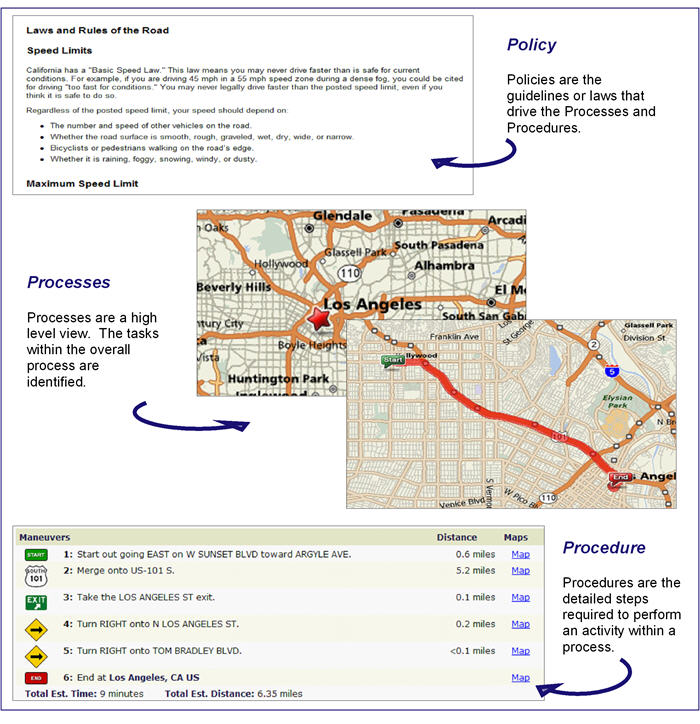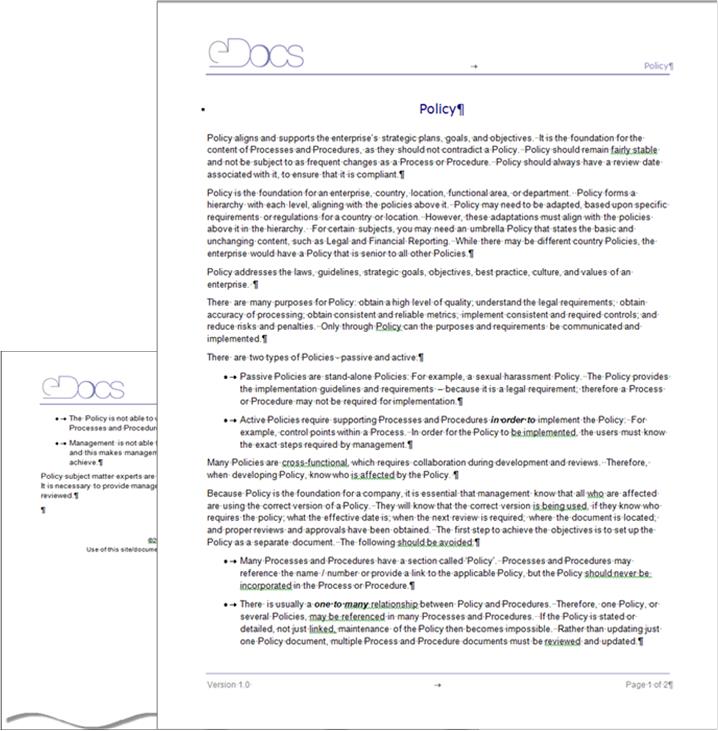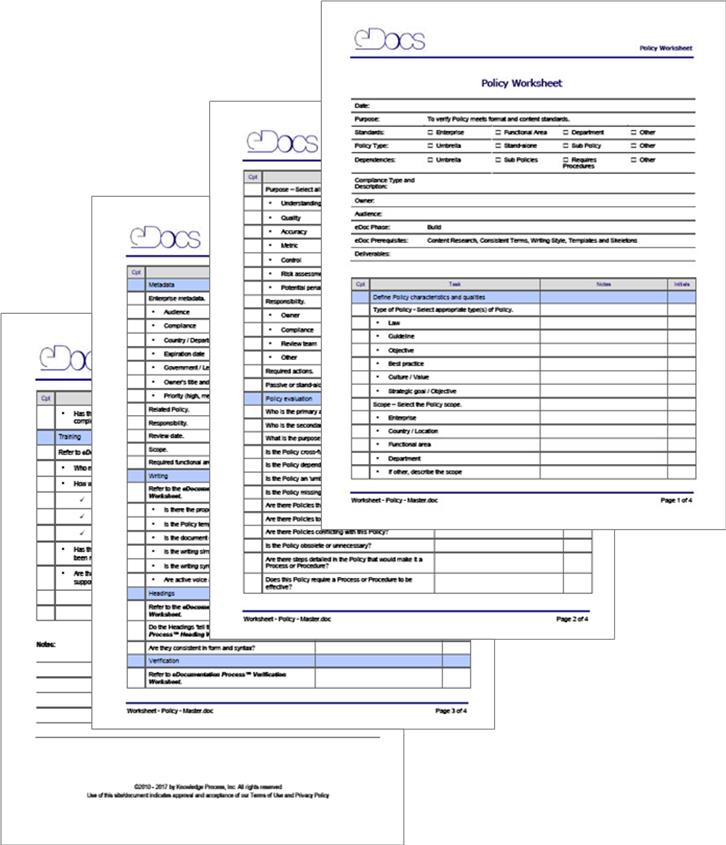Putting the Parts Together
Your organization’s documented Policies and Procedures should be a valuable company asset and contain vital knowledge.
Depending upon the company, various positions are responsible for the safe and efficient realization and implementation of the Policies, Processes, and Procedures. The eDocumentation Process guides you from planning through implementation of Policies and Procedures. It provide authors checklists, templates, and other development tools to the authors so they are not required to start from scratch each time for each document.
The terms ‘Policies’, ‘Processes’, and ‘Procedures’ have been interchanged. ‘Policies’, ‘Processes’, and ‘Procedures’ should be considered distinct types of documentation. Researching and developing documentation requires understanding the distinctions between a Policy, a Procedure, or a Process. Each type address related subject matter, but at a different level and with different types of content. Each type has a unique purpose that drives the content contained in each type of document. Describing the distinctions using who, what, where, when, why and how often helps to understand and properly structure them.
Policy qualities
- Policies are the business rules and guidelines of a company that ensure consistency and compliance with the company’s strategic direction. The Policies lay out the business rules under which a company, division, or department will operate.
- Policies are the guidelines under which Procedures are developed. There is not a one-to-one relationship between a Policy and a Procedure. Policies are not part of the Procedure, because they cannot be properly structured. However, the Procedure must reflect the business rules contained in the Policies.
- Policies address what the Policy is and its classification, who is responsible for the execution and enforcement of the Policy, and why the Policy is required.
Process qualities
- Processes are related activities that produce a specific service or product (example, Procurement to Payment). The majority of Processes cross departments or functional areas. Each Process designates the connect points and where it crosses department lines. The documentation presents the total Process. It is helpful to be able to reference or drill down to the applicable Policy or Procedure for a Process step. A Process map is a useful tool to graphically display the Process.
- Processes indicate where there is a separation of responsibilities and control points. They are also very helpful to identify Policy and Procedure requirements. Processes address who is responsible to perform the Process (department, division), what major functions are performed, and when the function is triggered.
Procedure qualities
- Procedures define the specific instructions necessary to perform a task or part of a Process. Procedures can take the form of a work instruction, a desk top Procedure, a quick reference guide, or a more detailed Procedure.
- Procedures usually are structured by subject (for example, system instructions, report instructions, or Process tasks). A Procedure usually addresses only a single task. This separation enables Procedure components to be compiled into special Procedure manuals for specific audiences, end users, and purposes.
- Procedures detail who performs the Procedure, what steps are performed, when the steps are performed, and how the Procedure is performed.
Driving from Hollywood to Los Angeles– A Policy, Process, and Procedure
Using common maps to illustrate the differences between a Policy, Process, and Procedure, the following example illustrates that different content is contained within each type of document. While all the information relates to the subject of driving from Hollywood to Los Angles, different content type is used for different documents. Understanding the difference you can determine what you are going to write.
Understanding the difference between a Policy, Process, and Procedure assist to determine the type of documents to write. The eDocumentation document will give further information on the specific type of document.




